Vincent Van Gogh's Early Life
There are few people in history who exemplify a "man ahead of his time" as much as the Dutch post-impressionist artist Vincent Van Gogh, who was born on March 30, 1853 in a small village in Zundert, the Netherlands, and his father was Theodorus Van Gogh, a local Protestant pastor, and his mother was Anna Carbentus Van Gogh.He grew up with an older brother, Cor, a younger brother, Theo Jr., and three younger sisters:Elizabeth, Wil and Anna.When he grew up, Van Considered a quiet but very smart child, with a love of nature but no appreciative fascination for art, Van Gogh was homeschooled by his mother and a governess until he was seven years old, when he went to a nearby village school. At the age of eleven, he was sent to a boarding school in the town of Zevenbergen, about 150 km from his hometown, and despite excelling in his academics, Van Gogh dropped out of school halfway through the second year and never returned.
When he was sixteen, Van Gogh worked as an art dealer for a short time before following in his father's footsteps and becoming a Protestant missionary in Belgium. He preached in the Borinage mine, where he worked as a teacher and read the Bible. He was very popular with the local miners, who called him "the Christ of the Coal Mine." While making many connections with the townspeople, his entourage was not large enough to make a living from it, and he ended up in serious financial trouble. As he tried to figure out what to do next, Van Gogh looked through some old landscape sketches he had made during his time in Belgium. Apparently these drawings resonated with him since he then decided that his true calling was as an artist.
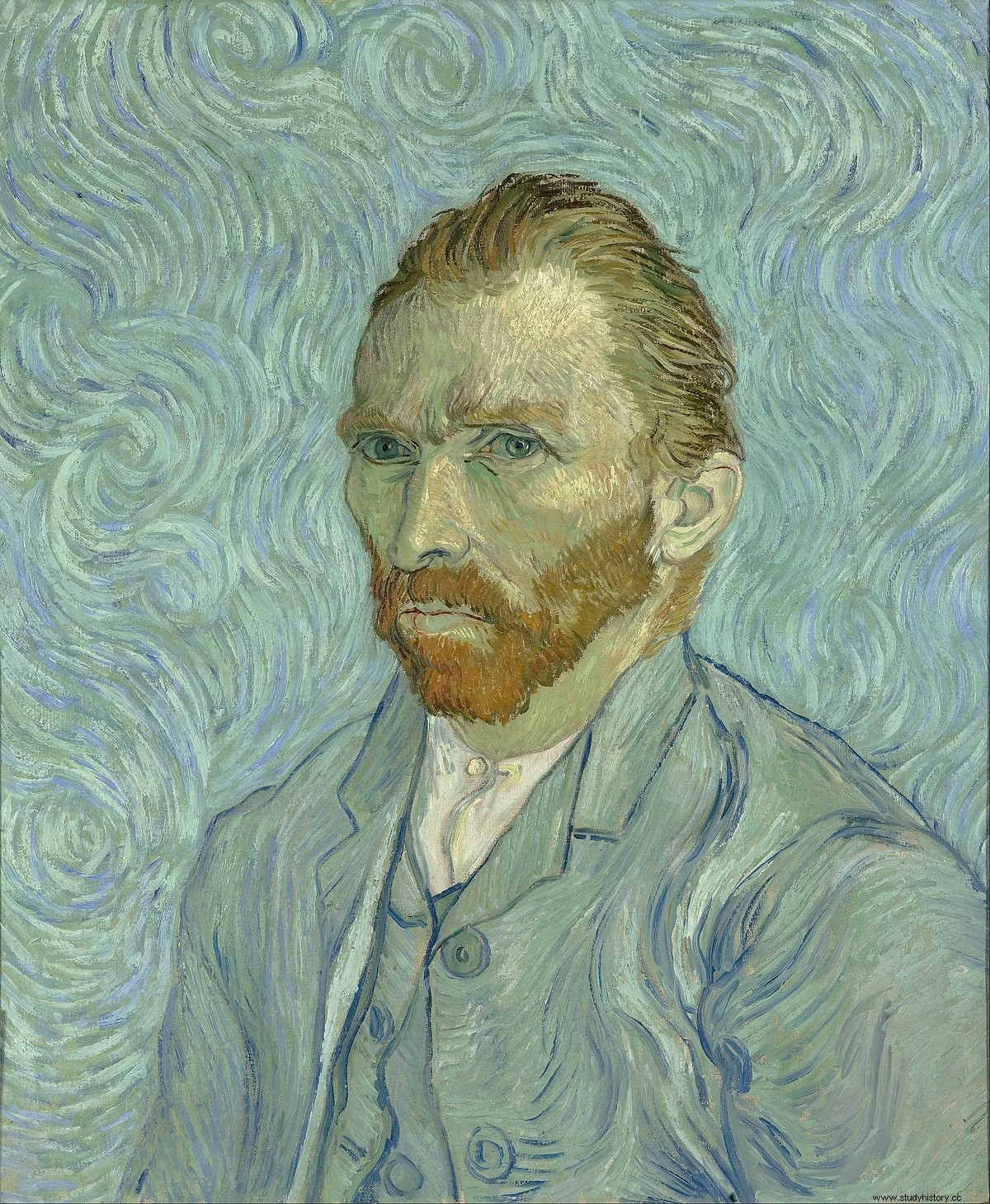
An artist's education
Van Gogh's decision to pursue a career as an artist received mixed reactions from the family. His parents thought it was a terrible idea. But his brother Theo, who was an art dealer, was very supportive and helped Van Gogh financially. Van Gogh moved back to live with his parents in 1881, where he began experimenting with different styles and media. After about a year he moved to The Hague. There he came under the guidance of his cousin, Anton Mauve, a famous Dutch realistic painter. Mauve taught him a lot about drawing and painting. Later, Van Gogh would spend several years moving from place to place, from Drenthe to Paris, and would further expand his artistic skills. Van Gogh rarely lived in any art school as long as the use of color and form was considered very radical.
Life as an artist
In many of Van Goh's earlier paintings, such as his 1885 oil painting The Potatoes, he used to use dark colors and low lighting. These early works also followed the School of Realism, undoubtedly influenced by his early education by Anton Mauve. This changed then Van Gogh moved to Paris. He was strongly inspired by the colors and style used in Impressionist and post-Impressionist paintings, which were more stylized, dramatic and vivid depictions of life. Since Van Gogh grew up fascinated by nature, he felt attracted to both of these art movements that sought to represent the world as it is, and by extension of the beauty of the world. In addition, as someone who constantly rebelled against artistic norms, Van Gogh was particularly attracted to post-impressionist art, which sought to break away from the more traditional rules of realism in art that were dominant at the time. Another source of inspiration for Van Gogh was the bright and contrasting colors of Japanese wooden block paintings. Impressionist and post-impressionist art sought to represent the world as it is, and by extension of the beauty of the world. By combining and enlarging the use of colors from both Eastern and Western painting, Van Gogh created pieces such as Café Terrance at Night in 1888 and Starry Night in 1889 . Van Gogh's paintings were very emotional and extremely conscious. He planned each beat in advance and gave each color-specific meaning as part of the underlying message of his pieces.
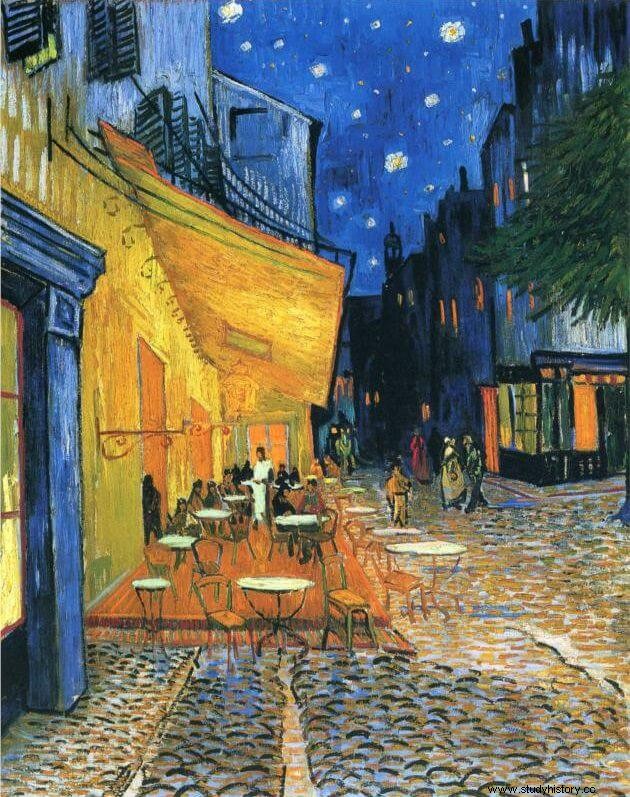
Public opinion
The public saw many of Van Gogh's later paintings as bizarre and radical because his work began to deviate so much from his previously representative, realistic style of Art. Pioneering, even in relation to more abstract painting schools, Van Gogh's use of color and brushwork was unlike anything previously seen in Impressionism or Post-Impressionism, as he took their ideas to further extremes. For example, French Impressionist paintings, such as Pierre-Auguste Renoir's painting with oil on canvas from 1881 Lunch for the boat part y, often included and was admired for its realistic elements, such as attention to realistic lighting and shading. On the other hand, Van Gogh, along with other revolutionary post-impressionist painters such as Paul Gauguin, rejected the limitations of what could easily be perceived. Instead, he used increasingly abstract forms and shapes and more vivid, dynamic colors to express drama and emotion - thus creating a fusion of what was perceived and the emotional state of the perceiver. Despite the absence of popular appeal, Van Gogh's paintings gained a cachet and fame among many art collectors and artists from his time in Paris. As a result, he could sell some of his paintings to art galleries in Paris, including his 1888 painting, The Red Vineyard . These sales, combined with financial support from his brother Theo, allowed him to earn a decent living and pursue his art. Nevertheless, Van Gogh remained a controversial artist throughout his life, and despite his enormous success as a professional artist, his worldwide fame was not achieved until after his death.
Vincent Van Gogh's Mental Illness
Today, Vincent Van Gogh is considered one of the greatest, but also one of the most tragic artists who has ever lived, due to his steady mental decline in the last years of his life and his self-destructive behavior. In life, doctors diagnosed Van Gogh as "crazy". "Madness" was an outdated term that was often used to label any perceived non-normative behavior. Today, many historians and psychologists believe, based on Van Gogh's letter, his poor self-esteem, and his history of extreme mood swings, that Van Gogh most likely suffered from manic depression or bipolar disorder. This mental disorder is characterized by extreme mood swings, often most recognizable by episodes of severe depression and anger. Other symptoms associated with bipolar disorder include low motivation, inability to end relationships, hyperactivity, delusions, suicidal thoughts and many more. Given the ignorance of people about the nature and treatment of mental health and the stigma attached to it during Van Gogh's time, it is not surprising that he was isolated and suffered greatly with little help or support.
Ear loss
One of the most famous facts today about Van Gogh's life is the loss of his left ear. In 1888, Van Gogh moved to a small house in Arles, France, where he created some of his most iconic works, including The Harvest and Bedrooms in Arles. Shortly after his arrival, the famous French painter Paul Gaugin became his roommate. Gaugin is known for his post-impressionist art and his influence on modern painters such as Pablo Picasso and Henri Matisse. Van Gogh and Gaugin became good friends and painted portraits of each other. However, their friendship ended when Van Gogh's mental health deteriorated, with tantrums, delusions, crying attacks and nervous breakdowns. On December 23, 1888, Van Gogh swung a knife at Gauguin when he threatened to move out. Later that day, in the midst of another mental breakdown, Van Gogh cut his own left ear. He then gave the severed ear to a maid named Gabrielle outside a brothel. A few months later, he volunteered at the Saint-Paul-de-Mausole Psychiatric Hospital in the Musée d'Orsay, Paris.
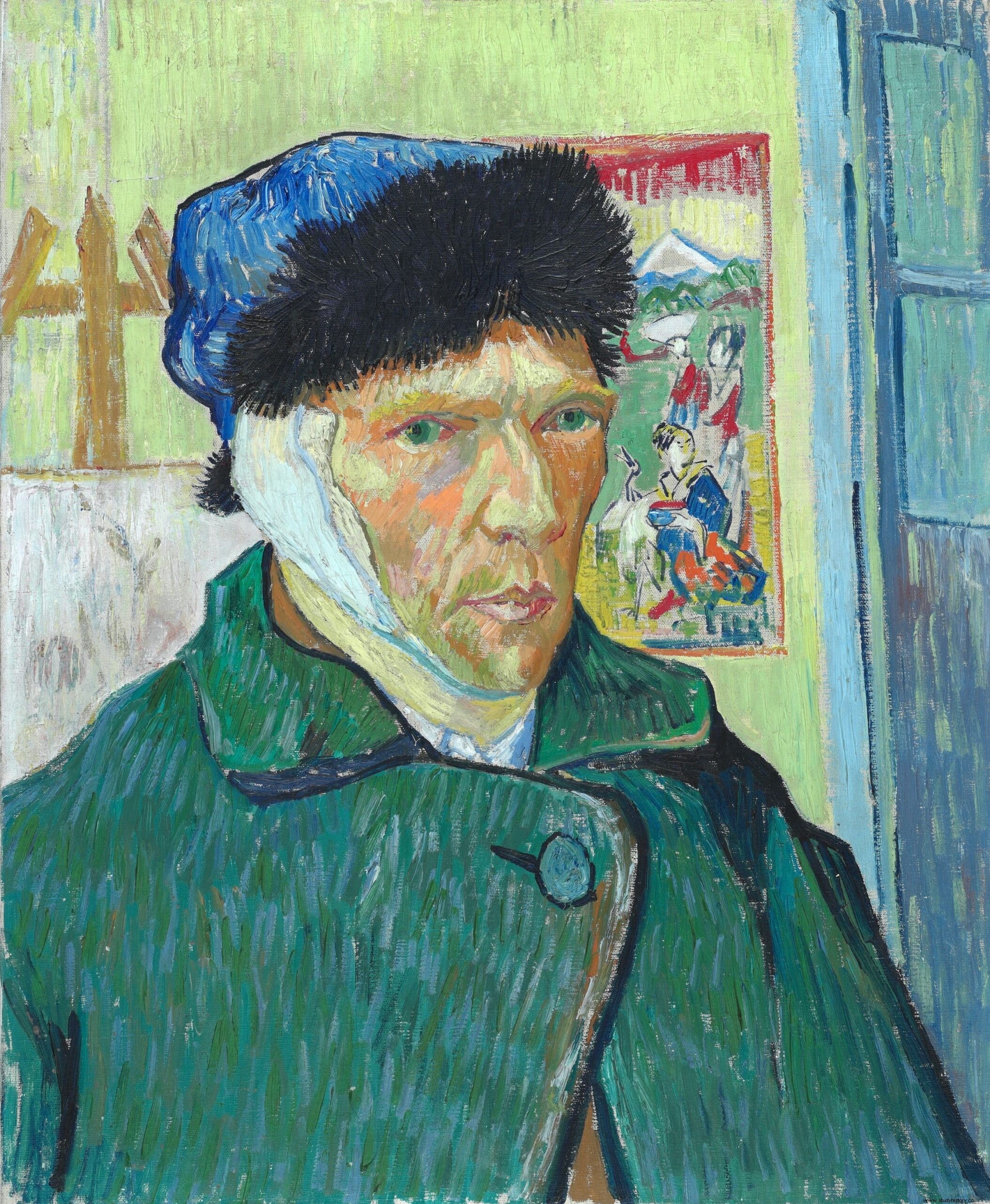
Suicide
Even in the asylum, Van Gogh created many spectacular paintings, including his 1890 Almond Flower . He was released the same year and moved to Auvers-sur-Oise, France, where he settled down and painted landscapes, self-portraits and plants and flowers at breakneck speed. However, his mental health continued to decline. He still suffered from depression and extreme mood swings. In addition, his brother Theo considered starting his own business, which Van Gogh thought would endanger the economy. Although Theo tried to comfort his brother and tell him that there was no need to worry, Van Gogh continued to sprout down. The combination of an uncertain future, his belief that he would lose the financial support of his brother, who had always been a mainstay of his life, and his declining mental health eventually became unbearable for him.
On July 27, 1890, Vincent Van Gogh went to a wheat field and shot himself in the chest. He was taken to a hospital, but died of his wounds two days later at the age of thirty-seven. He was buried in Auvers-sur-Oise City Cemetery. While some today speculate that Van Gogh was actually murdered by a stray bullet, no evidence supports this theory. Vincent Van Gogh died unmarried and without children.
Paintings
Van Gogh's attention to detail, his use of surreal and vibrant colors, his ability to express himself through his paintings, and his groundbreaking achievements in his field have contributed to his reputation as one of the greatest artists of all time. Despite his deteriorating mental state, Van Gogh was determined to demonstrate the beauty of the world and its emotional effect on the viewer. Van Gogh generally preferred to work with oil paint on canvas, in his distinctive post-Impressionist style. His career as an artist lasted less than ten years, but during that time he produced around 900 paintings and over a thousand illustrations.
The Potato Eaters
Vincent Van Gogh's oil painting on canvas from 1885 The Potato Eaters is one of his earliest masterpieces. The Potato Eaters is representative of Van Gogh's earlier, more realistic works. The play depicts a tired family of five, living in poverty and sitting around a table eating potatoes for dinner. In this painting, Van Gogh conveys the daily difficulties faced by the poor, highlighted by the few potatoes for the family meal. Van Gogh rated the Potato Eaters one of his greatest works. However, it was not recognized until after his death. At the time, the play was criticized by art critics for its dark colors and inaccuracies in peasants' anatomies. It remained in obscurity in the Van Gogh household until 1962, when it was acquired by the Vincent Van Gogh Arles Foundation. The painting can still be seen at the Van Gogh Museum in Amsterdam.
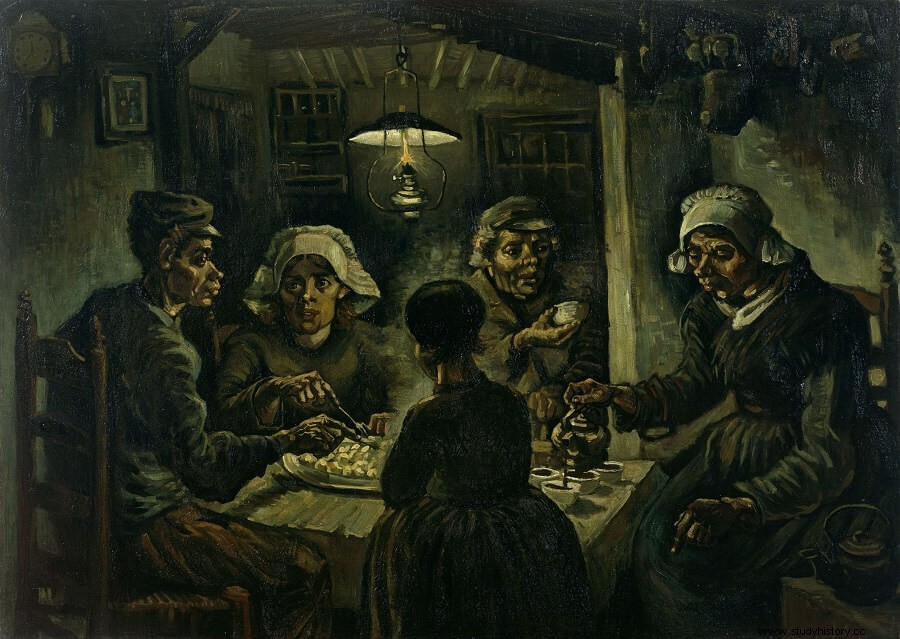
Starry Night
Few paintings are as recognizable today as Van Gogh's oil on canvas from 1889 Starry Night . Van Gogh created this painting while living at the Saint-Paul-de-Mausole Psychiatric Hospital. It depicts the view outside his room late at night, overlooking a valley, but with a city added by Van Gogh. The sky dances with spirals and different shades of blue and yellow. Starry Night acts as a beautiful combination of reality and Van Gogh's creative elaborations, producing an almost dream-like state with its surreal images. This was an exceptional break from Van Gogh's previously representative works of art where he had only painted what he saw without taking conscious creative liberties. While some cite these artistic freedoms as a sign that he is detached from reality, the brushstroke suggests that Van Gogh carefully planned the composition in every detail. Despite the fame of the work today, Van Gogh himself saw Starry Night as a complete failure. After his death, the painting was given to his brother Theo. Starry Night now lives in The Museum of Modern Art in New York.

Wheat field with crows
One of Vincent Van Gogh's last paintings before his death was the oil on canvas from 1890 Wheat Field with Crows. The painting shows a wheat field and gravel road near his home in Auvers-sur-Oise, France, along with many flying crows. Van Gogh combined the dark blue of the sky to express his feelings of sadness with the gold from the wheat field to show his gratitude for the beauty of the countryside. Many critics interpreted the play as a sign of Van Gogh's suicide a few weeks later, pointing to the gloomy sky and crows. Crows are seen in many cultures as symbols of death. Some people mistakenly think that Wheat Field with Crows was Van Gogh's last piece. However, he made several paintings in the following weeks until his death. Van Gogh shot himself in the fields where he loved to paint. Wheat field with crows can now be seen at the Van Gogh Museum in Amsterdam.
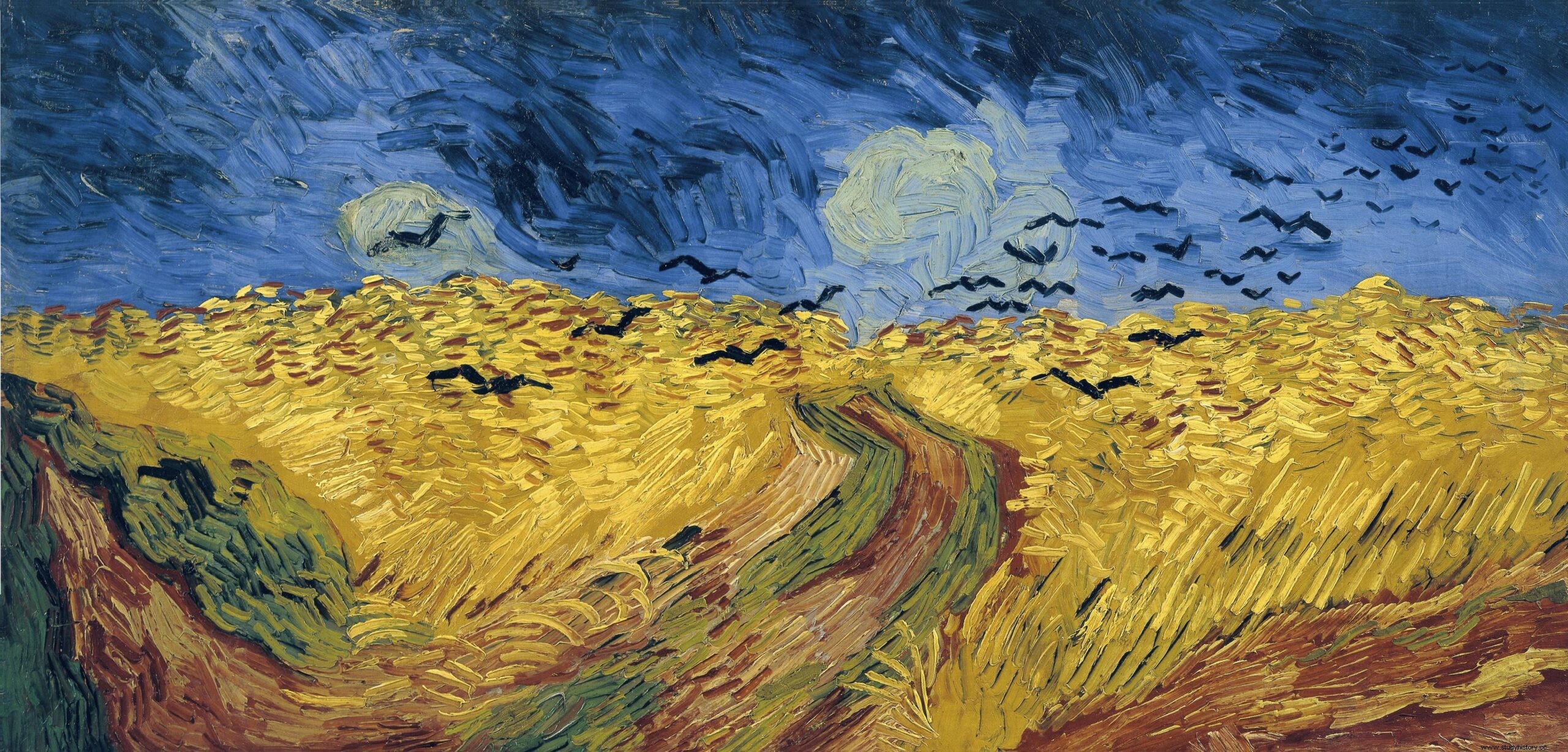
Vincent Van Goghs legacy
Although Van Gogh only painted for less than ten years, he is today one of the most acclaimed and influential artists who has ever lived. When he was alive, he was best known among some elite artists and art collectors in Paris and other parts of Europe. Van Gogh first gained world fame in 1901, nine years after his death. On March 15, 1901, many of his paintings were presented in an art exhibition at the Bernheim-Jeune Gallery in Paris, the first major exhibition of a collection of his art. This exhibition of his work led to Van Gogh becoming known throughout the world and eventually to his iconic status as an artist.
Van Gogh's post-impressionist style and his unique expression of both emotion and the beauty of nature are hallmarks of his art. Vivid and compelling quality in Van Gogh's post-impressionist art style has inspired many artists. In fact, countless artists joined the post-Impressionist art movement influenced by Van Gogh, including the American painter Stephan Duncan, who used many spiral-like shapes and vibrant colors in his landscape paintings. In 1973, the Vincent Van Goh Museum in Amsterdam was opened to the public. It shows many of the artist's most famous works of art. In 1985, the Vincent Van Gogh Arles Foundation, a non-profit organization, was founded to preserve the memory of Van Gogh and to support artists who have been inspired by his artistic vision. Despite trauma and mental problems, Van Gogh never let it stop him from expressing himself or his love for nature and its beauty through his art. His time in the world was too short and turbulent. Yet, driven by talent, emotion and passion, he nevertheless found a way to share his vision and even pain in ways that helped inspire other artists and contributed to the cultural richness of the world.
If you liked this article, you can check out some of my other articles:
Thor
Dinosaur art
cryptids
Superman
